#moolavar
Photo

#suprabhatham 🙏 #pushpanjali With #goddess Thirumaamagal #thaayaar Samaetha Sri Uragamellanaiyyan ( #moolavar ) #sowmya #narayana #perumal ( uthsavam ) #temple #thirukoshtiyur #divyadesam #sivagangai DT, #tamilnadu #ashtanga #vimanam #gopuradarshanam 🕉️🕉️🙏🙏 ....... #shrisaivastu ........ #lordbalaji #omnamonarayanaya #harekrishna #balaji #govinda #lordvishnu #instagod #lordvenkateshwara #saturdayvibes #templesofindia #tamilnadutourism #tamilnaduphotography #tamiltrending (at Tamilnadu,India) https://www.instagram.com/p/CppCDPpAJhW/?igshid=NGJjMDIxMWI=
#suprabhatham#pushpanjali#goddess#thaayaar#moolavar#sowmya#narayana#perumal#temple#thirukoshtiyur#divyadesam#sivagangai#tamilnadu#ashtanga#vimanam#gopuradarshanam#shrisaivastu#lordbalaji#omnamonarayanaya#harekrishna#balaji#govinda#lordvishnu#instagod#lordvenkateshwara#saturdayvibes#templesofindia#tamilnadutourism#tamilnaduphotography#tamiltrending
0 notes
Text
youtube
பர்வதமலை பயணம் | 4560 Ft Height | parvathamalai sivan temple vlog 2023 | moolavar | latest video
0 notes
Photo

Blessings from Devi Mahalakshmi, Kali & Moolavar. Abishekam offered as part of Diwali celebrations on Sunday Oct 23, 2022. #Kailasa #Nithyananda #Diwali #ohio #hindu — view on Instagram https://ift.tt/10GnVs3
0 notes
Photo
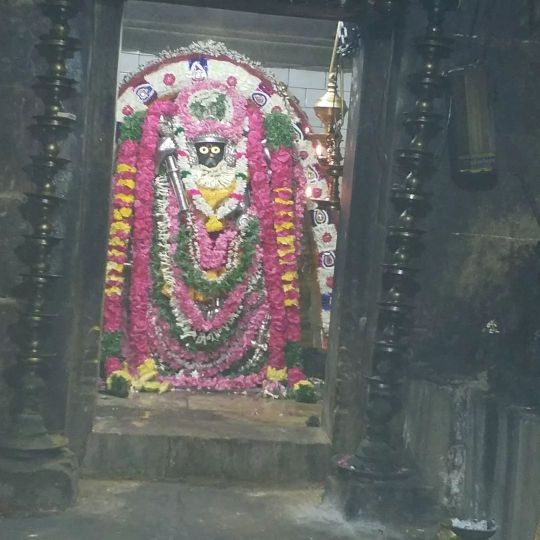
ULAGANAYAKI AMMAN - MOOLAVAR 8 TH DAY (at Karaikudi Kothamangalam) https://www.instagram.com/p/CjQneh7vx5-/?igshid=NGJjMDIxMWI=
0 notes
Photo

Shri bhoo neela perundevi nayika sametha Shri Abhista Varadaraja Swamy temple moolavar - Sethumadhavan Utsavar's name - varadharajar This temple is in Thopputhurai near Vedaranyam Nagapattinam dist. Spcl thanks to (at Thopputhurai) https://www.instagram.com/p/CiPNdQgLv4T/?igshid=NGJjMDIxMWI=
1 note
·
View note
Photo

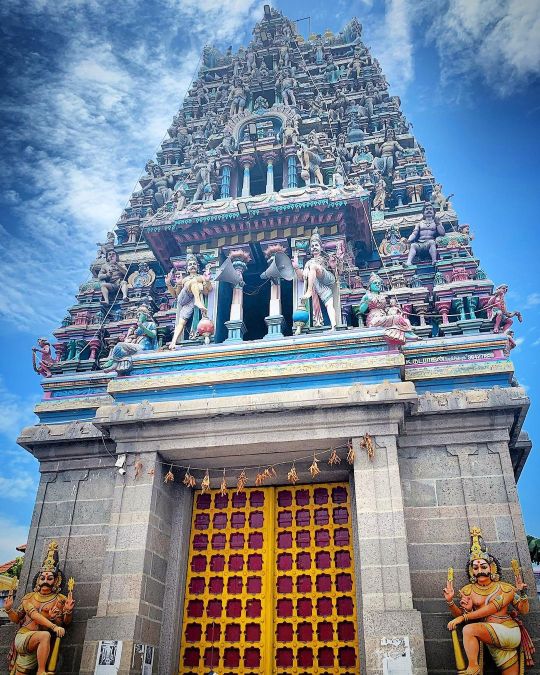

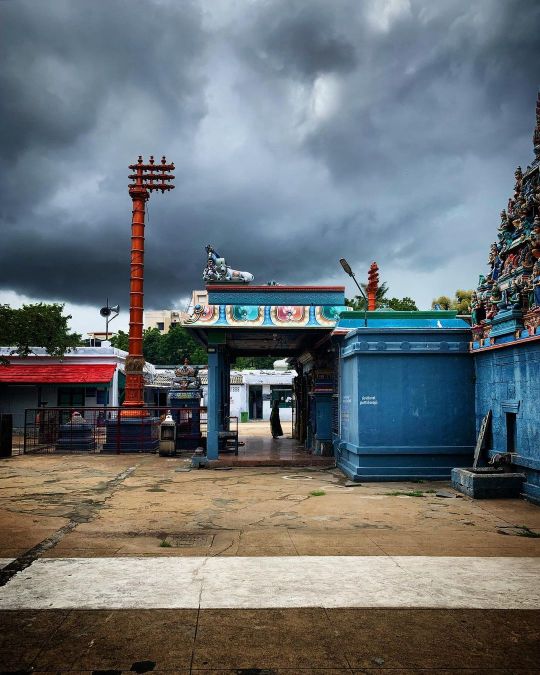
Sri Kandaswami Temple - Kosapet, Purasaivakkam, Chennai, Tamil Nadu
Matharasi Balakrishnan wrote :
🌸ஸ்ரீ கந்தசாமி கோயில்🌸
Moolavar : Sri Kandaswamy
This temple is in Kosapet a part of Purasaiwakkam in Chennai City. Since this area is famous for pot making it obtained the name of Kuyavar Pettai and latter turned to Kosapet.
Look at the beauty of Dwarapalakas so realistic in this temple. Dwarapalakas are the two guardian deities or the gatekeepers of the temple entrances or the Dwaras. The name Dwarapalakas is a combination of two words Dwaram and Palakas. In which Dwaram stands for door or entrance and the Palakas for guardians.
(via Instagram: Matharasi Balakrishnan)
60 notes
·
View notes
Photo

Murugan is known by numerous names in ancient and medieval texts of the Indian culture. Most common among these are Mahasena, Kartikeya, Kumara, Shanmukha, Skanda, and Subrahmanya .
He is the Hindu god of war. He is a son of Parvati and Shiva, brother of Ganesha, and a god whose life story has many versions in Hinduism
✨
Murugan – the Hindu God of Tamils
Murugan is hailed as ‘Thamizh kadavul’ — the Lord of Tamils by poets and Tamil cultural exponents who take pride in the uniqueness of Tamil culture. Murugan is a popular deity widely worshiped in Tamil Nadu and also in Kerala, Karnataka and Srilanka. Worship of Muruga is rather sporadic in other parts and linguistic segments of India.
The myriod Tamil names of Murugan
The word Murugan means one who is handsome. In India, naming children with popular names of God is very widely practiced. The name Murugan and his numerous other names like Murugaiyan, Sivamurugan, Velmurugan, Saravanan, Karthigeyan, Senthil, Arumugam, Subramaniyan, Subbaiah, Subbarayan, Swaminathan, Velan, Kadirvel, Shaktivel, Kandan (Skandan), Kandaswamy, Kadamban, Kumar, Kumaraswamy, Shivakumar, Shanmukham, Palani (it is actually the name of one of his abodes), Palaniswamy, Muthu Kumaran, Sakthi Kumar, Muthukumaraswamy, Dandapani, Dandayutapani, etc. are widely used in naming children; a vast majority in the above names are quite typical to Tamils.

The birth of Murugan
Murugan is Subramanya, the son of lord Shiva. According to mythology, Murugan was born out of the fire that emanated from Lord Shiva’s third eye — his eye at the middle of his forehead, when he opened it to burn Kamadeva, or Manmatha, the god of love and passion, who tried to disturb Shiva’s meditation and turn his mind towards romance. The very purpose of birth of Muruga was to annihilate the two demons Tarakasura and Surapadma. Elaborate details of this mythology can be obtained from “Skanda Puranam”. The tamil poetic version of this mythology is also available, known as “Kanda Puranam” written by the poet Kacchiappa Sivachariyar (1350-1420).
Puranas
The Skanda Purana narrates that Shiva first wed Dakshayani (also named Sati), the granddaughter of Brahma, and the daughter of Daksha. Daksha never liked Shiva, who, symbolizing destruction and detachment, begs for food, dances in a graveyard smeared with ashes, and has no possessions, not even good clothes for himself. Daksha publicly insulted Shiva in a Yagna ceremony, and Sati immolated Herself in anger over this treatment of Her husband. The Yagna was destroyed by the ganas of Shiva led by Virabhadra. Shiva withdrew himself from the universe and engaged himself in yogic meditation in the Himalayas.
In the meanwhile, Surapadman (an asura) ravaged the earth and tormented its beings. Tarakasuran believed that, because Shiva is an ascetic and his earlier marriage was conducted with great difficulty, his remarriage was out of the question, hence his boon of being killed by Shiva's son alone would give him invincibility.
It was realized by the gods that only the son born of Shiva could lead the gods to victory over Tarakasuran, Surapadman and their companions. They plotted with Manmatha, also known as Kamadeva, the God of love, to shoot a flower arrow from his bow at Shiva, as he sat in meditation, so as to make him fall in love with Parvati (who was Dakshayani, reborn). When Kamadeva aimed his arrow, Shiva opened his third eye and incinerated him to ashes instantly.

Shiva handed over his effulgence of the third eye, used to destroy Manmatha, to Agni, as he alone was capable of handling it until it becomes the desired offspring. Even Agni, tortured by its heat, handed it over to Ganga, who in turn transported it into the Saravana Forest and deposited it in a pond of reeds called the Saravana Poigai (located at mouths of river Ganga) , where the sparks became six children. They were raised by the six Krittika or Kartika - the stars that make up the Pleiades, earning the name Karthikeya. Parvati combined these six babies into one with six faces, i.e. Shanmukha or Arumugan. Since he was born in the Saravana he was also called 'Saravanabhava'.

Murugan became the supreme general of the demi-gods then escorted the devas and led the army of the devas to victory against the asuras.
Murugan’s vehicle is peacock and his main weapon to destroy his enemies is “Vel” (lance). His army flag (“kodi“) carries the symbol of rooster (“seval“) and on account of it, he is also known as “Seval Kodiyon“.
According to mythology, Lord Murugan is married to two wives, Devayani (daughter of Indra, the king of Devas) and Valli. Valli reportedly belongs to a Tamil tribal community.

Murugan and Gyana (Supreme Knowledge)
Mahavakyam - "The Great Sayings" of the Upanishads:
प्रज्ञानम् ब्रह्म, Prajñānam Brahm, Consciousness is God. ~ Aitareya Upanishad (Chapter 3, verse 3)
अहं ब्रह्मास्मि, Ahaṁ Brahmāsmi ~ Brihadaranyaka Upanishad 1.4.10 of the Shukla Yajur Veda
Aham (अहं) means “I”, Brahm (ब्रह्म) means all possibilities and Asmi (अस्मि) means “am”.
तत्त्वमसि, Tát Túvam Asi ~ Chandogya Upanishad 6.8.7 of the Sama Veda
tát (तत्) means “That”, túvam means “You”, Asi “are”. Simply put, Thou art that.
🌺 ॐ 🌺
Realizing the highest truth of the Atman, and its oneness with the Brahman, is called gyana (true knowledge) in Hinduism. Attaining this knowledge is also known as the opening of the “third eye” in a person. Lord Murugan, who was born on account of the opening of the third eye of Lord Shiva is a knower of the supreme truth and is therefore referred to as “Gyana Panditan” (An exponent of Supreme knowledge).
The holy Hindu syllable “Om” is said to encapsulate the Supreme knowledge; one who knows the profoundest meaning of Om is indeed a Gyani who knows the Supreme Truth. According to mythology, Murugan, even as a little boy was aware of the meaning of Om.
On one occasion Murugan imparted a secret upadesa on pranava, the sound of Om, to Shiva and thus earned the title ‘Guru of Shiva’.

Since Murugan thus became a Guru (Swami) who taught to the very Lord (Natha) of the universe, he was called Swaminathan. In Tamil, he is hailed as “Thagappan Sami” – one who became a Guru to his own father.
✨
Ramana Maharshi as Skanda son of Shiva
Bhagavan Sri Ramana Maharshi, the very embodiment of the beginningless infinite supreme Brahman, the Satchitananda (existence, consciousness, bliss), is considered by his ardent devotees to be an incarnation of Lord Muruga. Though he has not written any hymns about Muruga, his cryptic poems are a source of treasure which contains the essence of his philosophical teachings.
Maharshi Ramana has taught two principal paths as the main spiritual practices [sadhanas] for the attainment of Self-Knowledge, which is the state of eternal, perfect and unalloyed happiness. The first path He taught is the path of Self-Enquiry, that is, knowing oneself (one’s real nature) by enquiring ‘Who Am I?’, while the second path is the path of self-surrender, that is, surrendering oneself (the ego) completely to God. The former is the path of knowledge or gyana (jnana marga), and the latter is the path of devotion (bhakti marga).
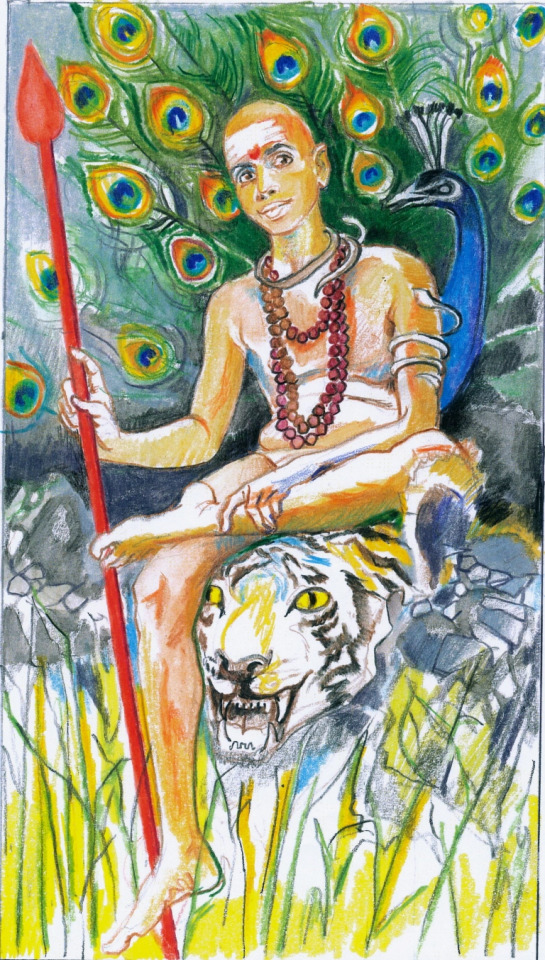
Jane Adams Art - SACRED INDIA TAROT – RAMANA AS SKANDA SON OF SIVA
✨
The 6 great abodes of Murugan in Tamil Nadu
The six sites at which Karthikeya sojourned while leading his armies against Surapadman:
Swamimalai - Arulmigu Swaminatha Swamy Temple - A very famous temple of Swaminathan (i.e. Murugan), situated at Swamimalai (near Kumbakonam at Tamil Nadu, India), is treated as the most sacred place as where Lord Murugan preached the Pranav Mantra “OM” to His father Lord Shiva when He was a child.
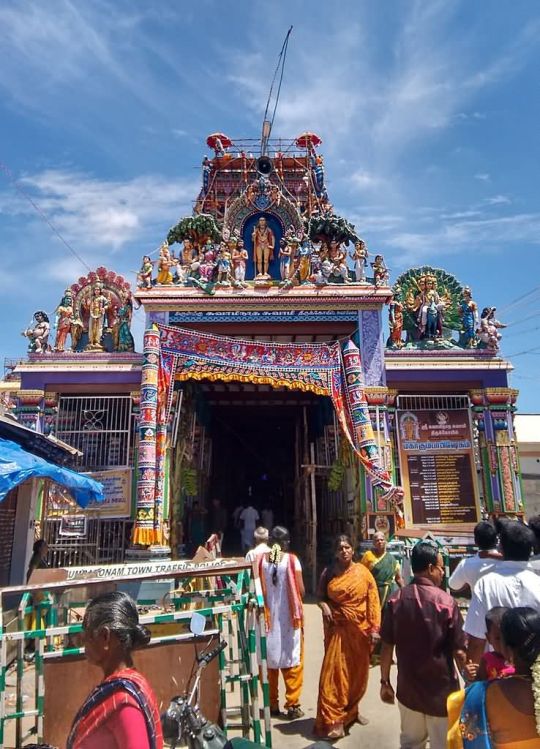
The other 5 abodes are : Tiruttanikai, Tiruvavinankudi (Palani), PazhamudirSolai, Tirupparamkunram and Tiruchendur.
“Thirumurugatruppadai” is a famous and ancient Tamil literature written by poet Nakkirar of the Sangam period (circa the 3rd century AD), which contains the stories of the wondrous divine play of Lord Murugan in all these 6 main abodes.
These six sites collectively came to be known as "Arupadai Veedu" (Lang:Tamil), it means the six battle camps of the Lord.
Worship in Tamil Nadu
Thai Poosam during January-February month is celebrated as a 6-day festival. On Thai Poosam day, Kavadis and Palkudams are taken by devotees in procession around Chhedanagar. Special Abhishekams are performed to the Moolavar and Utsavar (festival deity's moorthi usually taken during temple festival processions; utsavar moorthi is generally made of metal, and Moolavar murthi is usually made of stone). Annadhanam (The Sacred Offering of Food) is provided to all devotees participating in the functions. In the night, Lord Muruga is taken in procession accompanied by Nadaswaram, Veda Parayanam around Chhedanagar.
Vaikasi Visakam day, during May-June month, Kavadis (a 'physical burden' made out of elaborate and decorated framework, lifted onto a person’s shoulders) and Palkudams (milk pots) are taken by devotees in procession around Chhedanagar.
Skanda Sashti during October-November month is celebrated as a 6-day festival. Spiritual discourses by learned scholars and/or music concerts by popular artists from South or from Mumbai are organized.
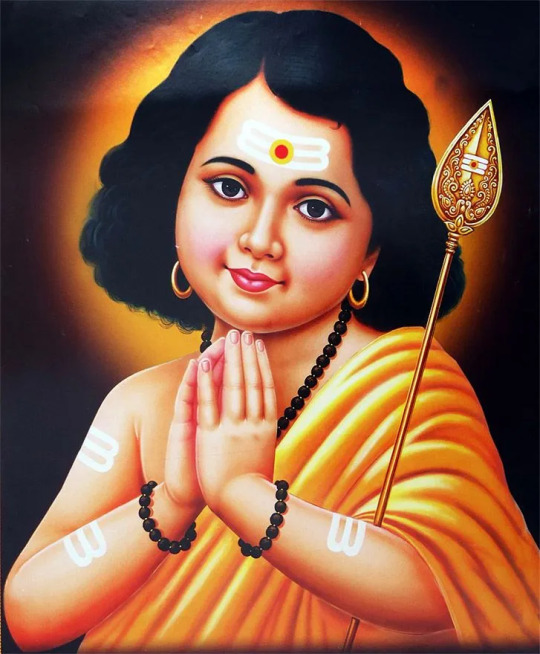
#Bhagavan Sri Ramana Maharshi#Kartikeya#Karttikeya Skanda Kumara Murugan Mahasena Shanmukha Subrahmanya#Pranava OM#Arupadai Veedu#mahavakya#That Thou Art
44 notes
·
View notes
Photo
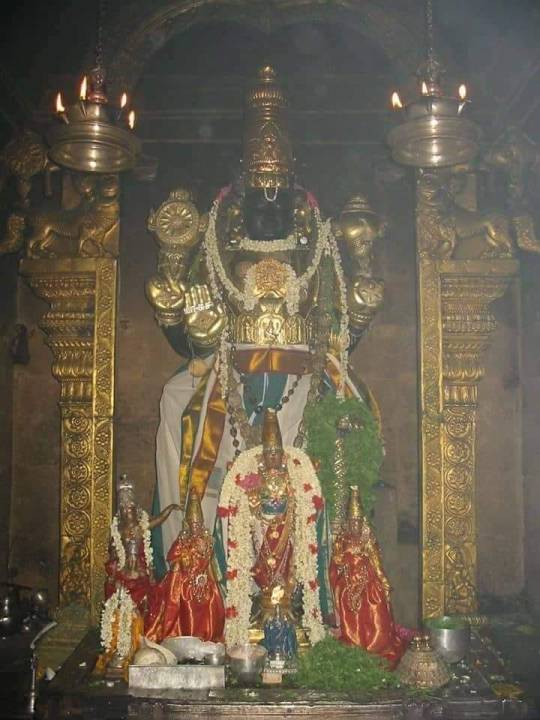
Kanchi Sri Varadharaja Perumal - Moolavar, Kanchipuram, Tamil Nadu
38 notes
·
View notes
Text

Parasodashi painting near Chithra Sabha Moolavar and below it Sri Chakra and Sapta Matrukas ..
14 notes
·
View notes
Text
Moolavar And Utsavar Idols In Pre Islamic Worship, Satyam Sanam
When we follow the evolution of thought in Religions,one can see a gradual development of Spirituality.
Man first feared Nature and worshipped it’s different aspects.
He assigned them super human powers.
He was scared of Fire,Water,Rains, Thunderbolt, Earthquakes.
He feared them ,appeased them and sought relief.
There were as many God’s one feared.
On the other hand,when he found benevolent…
View On WordPress
0 notes
Photo
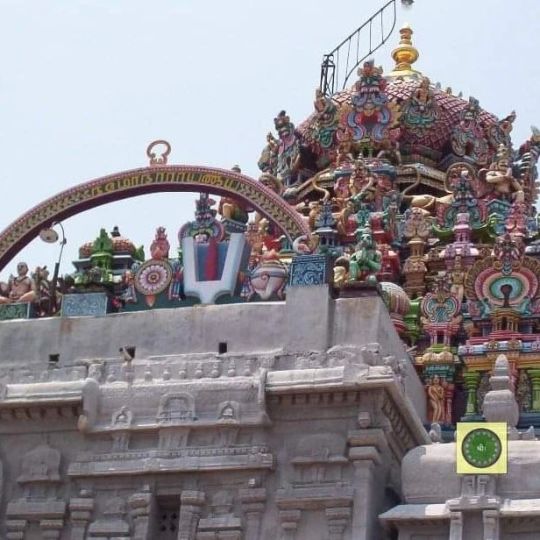
#suwarna 🙏 #suprabhatham With #goddess #thirumaamagal #thaayar Samaetha #sri #Uragamellanaiyyan ( #moolavar ) #sowmya #narayana #perumal (Uthsavar) #temple #thirukoshtiyur #divyadesam #sivagangai DT, #tamilnadu #ashtaang #vimaanam #gopuradarshanam 🕉️🕉️🙏 #shrisaivastu . . #lordbalaji #perumaltemple #omnamonarayana #namonarayana #mahalakshmi #utsavam #dharshan #lordvishnu #templesoftamilnadu #templesofindia https://www.instagram.com/p/CdH5kHOvVRa/?igshid=NGJjMDIxMWI=
#suwarna#suprabhatham#goddess#thirumaamagal#thaayar#sri#uragamellanaiyyan#moolavar#sowmya#narayana#perumal#temple#thirukoshtiyur#divyadesam#sivagangai#tamilnadu#ashtaang#vimaanam#gopuradarshanam#shrisaivastu#lordbalaji#perumaltemple#omnamonarayana#namonarayana#mahalakshmi#utsavam#dharshan#lordvishnu#templesoftamilnadu#templesofindia
0 notes
Text
Watch "பர்வதம் மலை சிவனுக்கு தீபாராதனை video 2023 | parvathamalai sivan moolavar statue part 2 | tamil" on YouTube
youtube
Parvathamalai sivan temple moolavar swami statue video original 2023
0 notes
Photo
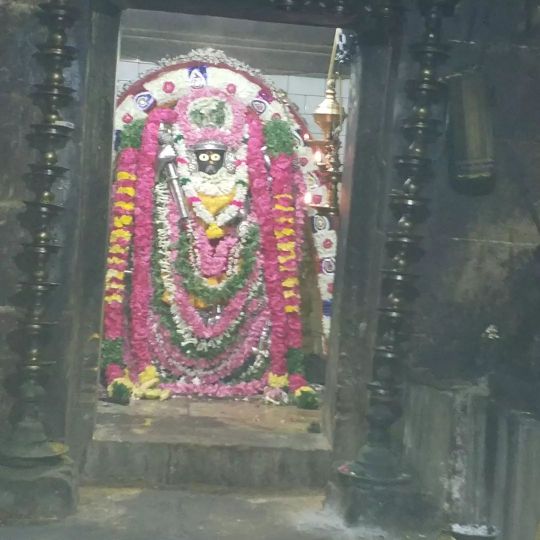
7 TH DAY ULAGANAYAKI AMMAN KOLU - MOOLAVAR (at Karaikudi Kothamangalam) https://www.instagram.com/p/CjOAPEuInLD/?igshid=NGJjMDIxMWI=
0 notes
Photo
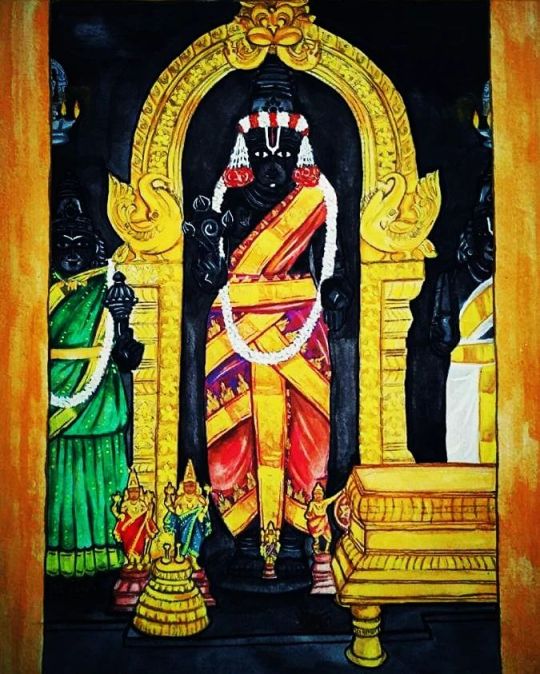
Venkata Krishnan moolavar artwork thiruvallikeni chennai (at Parthasarathy Temple, Triplicane) https://www.instagram.com/p/CfgaVqSvqPy/?igshid=NGJjMDIxMWI=
1 note
·
View note
Photo

Murugan é conhecido por vários nomes em textos antigos e medievais da cultura indiana. Os mais comuns entre eles são Mahasena, Kartikeya, Kumara, Shanmukha, Skanda e Subrahmanya.
Ele é o deus Hindu da guerra. Ele é filho de Parvati e Shiva, irmão de Ganesha e um deus cuja história de vida tem muitas versões no Hinduísmo.
✨
Murugan – o Deus Hindu dos Tâmiles
Murugan é aclamado como ‘Thamizh kadavul’ - o Senhor dos Tâmiles por poetas e expoentes culturais Tâmiles que se orgulham da singularidade da cultura Tâmil. Murugan é uma divindade popular amplamente adorada em Tamil Nadu e também em Kerala, Karnataka e Srilanka. A veneração de Karthigeya ou Subramanya (outros nomes de Muruga) é muito esporádica em outras partes e segmentos linguísticos da Índia.
A miríade de nomes Tâmiles de Murugan
A palavra Murugan significa aquele que é formoso. Na Índia, é muito usual dar às crianças nomes populares de Deus. O nome Murugan e seus vários outros nomes, como Murugaiyan, Sivamurugan, Velmurugan, Saravanan, Karthigeyan, Senthil, Arumugam, Subramaniyan, Subbaiah, Subbarayan, Swaminathan, Velan, Kadirvel, Shaktivel, Kandyan (Skandaniyan), Kandaswamwam, Kandaswam Shivakumar, Shanmukham, Palani (na verdade é o nome de uma de suas moradas), Palaniswamy, Muthu Kumaran, Sakthi Kumar, Muthukumaraswamy, Dandapani, Dandayutapani etc., são amplamente usados para nomear crianças; na sua grande maioria, os nomes acima são muito típicos dos Tâmiles.
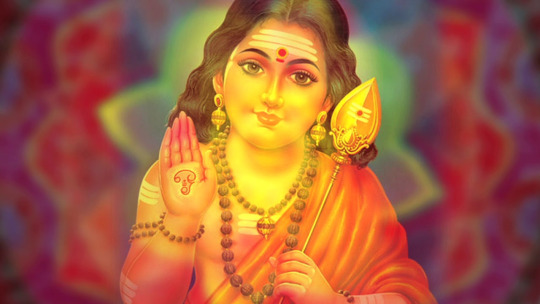
O nascimento de Murugan
Murugan é na verdade Subramanya, o filho do senhor Shiva. Segundo a mitologia, Murugan nasceu do fogo que emanava do terceiro olho do Senhor Shiva — o seu olho no meio da testa, quando ele o abriu para queimar Manmatha (ou Kamadeva, Senhor do amor e romance) que tentou perturbar a meditação de Shiva e assim voltar a sua mente para o romance. O verdadeiro propósito do nascimento de Muruga era aniquilar os dois demónios Tarakasura e Surapadma. Detalhes elaborados desta mitologia podem ser obtidos em “Skanda Puranam”. Também está disponível a versão poética Tâmil dessa mitologia, conhecida como “Kanda Puranam”, escrita pelo poeta Kacchiappa Sivachariyar (1350-1420).
Puranas
O Skanda Purana narra que Shiva se casou pela primeira vez com Dakshayani (também chamada de Sati), neta de Brahma e filha de Daksha. Daksha nunca gostou de Shiva, que, simbolizando destruição e desapego, mendiga por comida, dança num cemitério, manchado de cinzas, e não tem posses, nem mesmo boas roupas para se cobrir. Daksha insultou publicamente Shiva numa cerimónia de Yagna, e Sati se imolou pela exasperação causada pelo tratamento dado a Seu marido. O Yagna foi destruído pelos ganas de Shiva liderados por Virabhadra. Shiva retirou-se do universo e dedicou-se à meditação iogue nos Himalaias.
Nesse ínterim, Surapadman (um asura) devastou a terra e atormentou os seus seres. Tarakasuran acreditava que, pelo facto de Shiva ser um asceta e o seu casamento anterior ter sido conduzido com grande dificuldade, o seu novo casamento estava fora de questão, portanto, a bênção que tinha recebido de ser morto apenas pelo filho de Shiva dar-lhe-ia invencibilidade.
Os deuses perceberam que apenas o filho nascido de Shiva poderia levar os deuses à vitória sobre Tarakasuran, Surapadman e seus companheiros. Conspiraram com Manmatha, também conhecido como Kamadeva, o Deus do amor, para disparar do seu arco uma flecha de flores sobre Shiva, enquanto ele estava sentado em meditação, para o fazer apaixonar-se por Parvati (que era Dakshayani, renascida). Quando Kamadeva apontou a sua flecha, Shiva abriu o seu terceiro olho e incinerou-o reduzindo-o a cinzas instantaneamente.
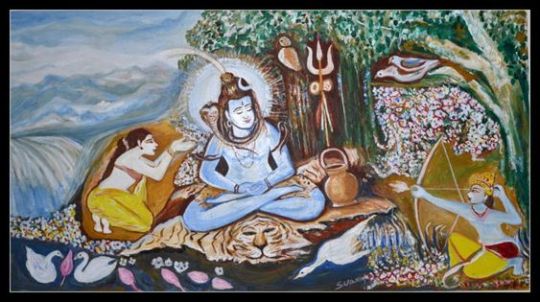
Shiva entregou o seu esplendor do terceiro olho, usado para destruir Manmatha, a Agni, pois só este era capaz de lidar com ele até que se tornasse o filho desejado. Até mesmo Agni, torturado pelo seu calor, o entregou a Ganga, que por sua vez o transportou para a Floresta Saravana e o depositou num lago de juncos chamado Saravana Poigai (localizado na foz do rio Ganges), onde as centelhas se tornaram em seis meninos. Eles foram criados pelas seis Krittika ou Kartika - as estrelas que compõem as Plêiades, adquirindo o nome de Karthikeya. Parvati combinou estes seis bebés num só com seis faces, ou seja, Shanmukha ou Arumugan. Como ele nasceu em Saravana, também foi chamado de 'Saravanabhava'.
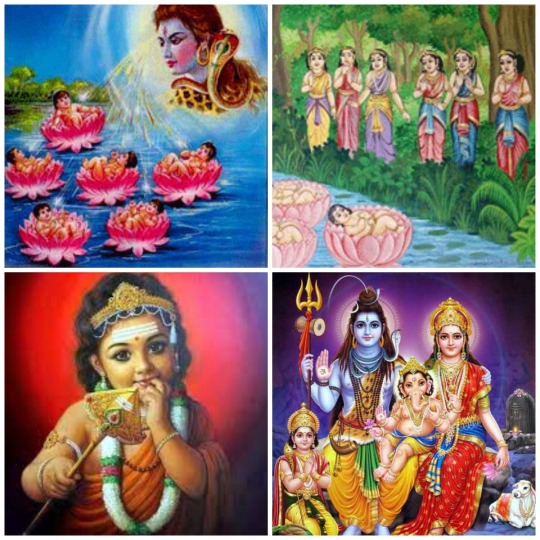
Murugan tornou-se o general supremo dos semi-deuses, então escoltou os devas e liderou o exército dos devas à vitória contra os asuras.
O veículo de Murugan é o pavão e a sua principal arma para destruir os seus inimigos é "Vel" (a lança). A sua bandeira do exército (“kodi“) tem o símbolo do galo (“seval“) e por isso é também conhecida como “Seval Kodiyon“.
Segundo a mitologia, Lord Murugan é casado com duas esposas, Devayani (filha de Indra, o rei dos Devas) e Valli. Valli pertence a uma comunidade tribal Tamil.
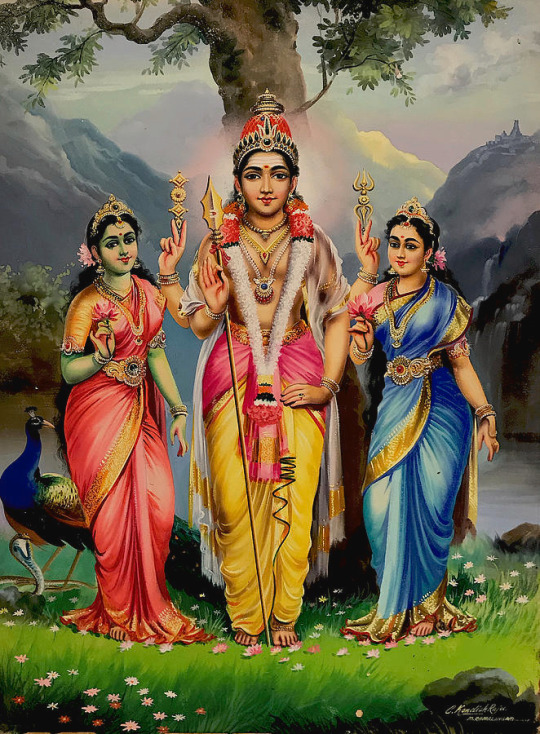
Murugan e Gyana (Conhecimento Supremo)
Mahavakyas - "As grandes declarações" das Upanishads:
प्रज्ञानम् ब्रह्म, Prajñānam Brahm, Consciência é Deus. ~ Aitareya Upanishad (Capítulor 3, versículo 3)
अहं ब्रह्मास्मि, Ahaṁ Brahmāsmi ~ Brihadaranyaka Upanishad 1.4.10 do Shukla Yajur Veda
Aham (अहं) significa “Eu”, Brahm (ब्रह्म) significa todas as possibilidades e Asmi (अस्मि) significa “sou”.
तत्त्वमसि, Tát Túvam Asi ~ Chandogya Upanishad 6.8.7 do Sama Veda
tát (तत्) significa “Aquilo”, túvam significa “Tu”, Asi “és”. Simplificando, Tu és aquilo.
🌺 ॐ 🌺
Perceber a verdade mais elevada do Atman, e a sua unidade com o Brahman, chama-se de gyana (conhecimento verdadeiro) no Hinduísmo. Alcançar esse conhecimento também é conhecido como a abertura do “terceiro olho” numa pessoa. O Senhor Murugan, que nasceu devido à abertura do terceiro olho do Senhor Shiva, é um conhecedor da verdade suprema e é, portanto, referido como “Gyana Panditan” (um expoente do Conhecimento Supremo).
Diz-se que a sagrada sílaba Hindu “Om” encapsula o Conhecimento Supremo; aquele que conhece o significado mais profundo do Om é de facto um Gyani que conhece a Verdade Suprema. De acordo com a mitologia, Murugan, mesmo quando menino, estava ciente do significado do Om.
Numa ocasião, Murugan transmitiu uma upadesa secreta sobre o pranava, o som do Om, a Shiva e, assim, ganhou o título de "Guru de Shiva".
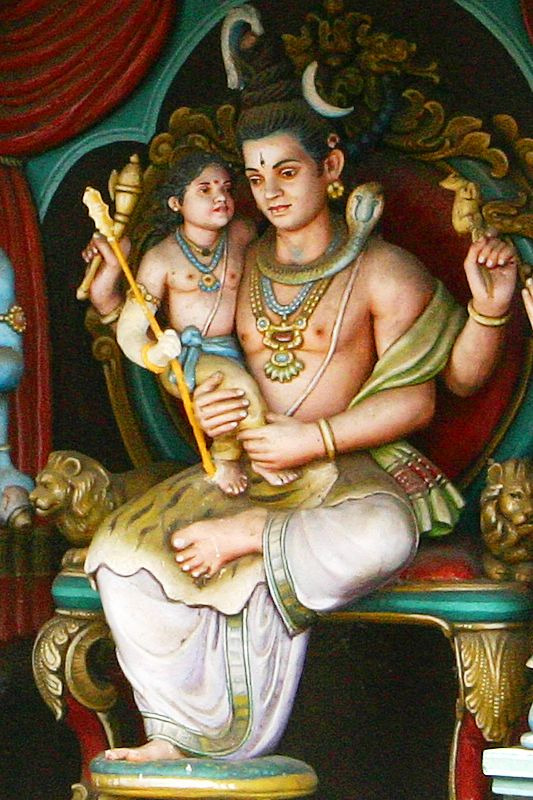
Visto que Murugan se tornou um Guru (Swami) que ensinou ao próprio Senhor (Natha) do universo, ele foi chamado de Swaminathan. Em Tamil, ele é saudado como “Thagappan Sami” - aquele que se tornou um Guru de seu próprio pai.
✨
Ramana Maharshi como Skanda filho de Shiva
Bhagavan Sri Ramana Maharshi, a própria personificação do Brahman supremo infinito sem começo, o Satchitananda (existência, consciência, bem-aventurança), é considerado por seus devotos ardentes como uma encarnação do Senhor Muruga. Embora não tenha escrito nenhum hino sobre Muruga, os seus poemas de significado profundo são uma fonte de tesouro que contém a essência dos seus ensinamentos filosóficos.
Maharshi Ramana ensinou dois caminhos como principais práticas espirituais (sadhanas) para a obtenção do Auto-Conhecimento, que é o estado de felicidade eterna, perfeita e pura. O primeiro caminho que ele ensinou é o caminho da Auto-inquirição, isto é, conhecer a si mesmo (a nossa própria natureza real) investigando “Quem sou eu?”, e o segundo caminho é o caminho da auto-entrega, ou seja, render-se (o ego) completamente a Deus. O primeiro é o caminho do conhecimento ou gyana (jnana marga), e o último é o caminho da devoção (bhakti marga).
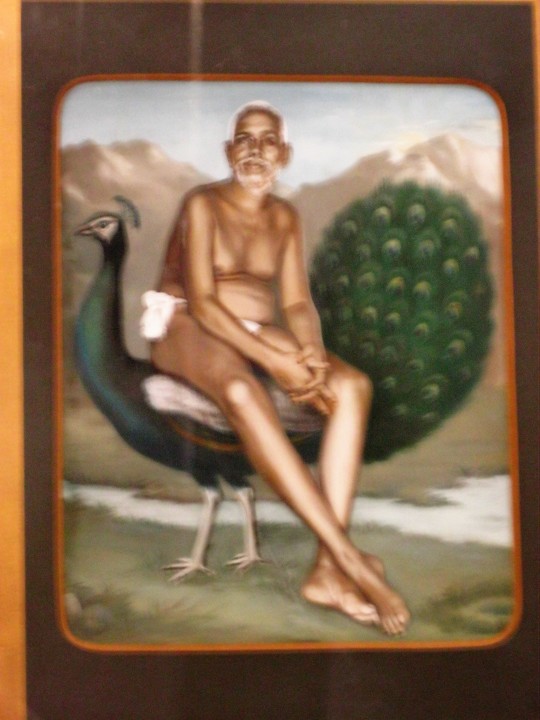
✨
As 6 grandes moradas de Murugan em Tamil Nadu
Os seis locais em que Karthikeya permaneceu enquanto liderava os seus exércitos contra Surapadman:
Swamimalai - Arulmigu Swaminatha Swamy Temple - Um templo muito famoso de Swaminathan (ou seja, Murugan), situado em Swamimalai (perto de Kumbakonam em Tamil Nadu, Índia), é tratado como o lugar mais sagrado onde Lord Murugan pregou o Pranav Mantra "OM" para o Seu pai Lord Shiva quando era uma criança.
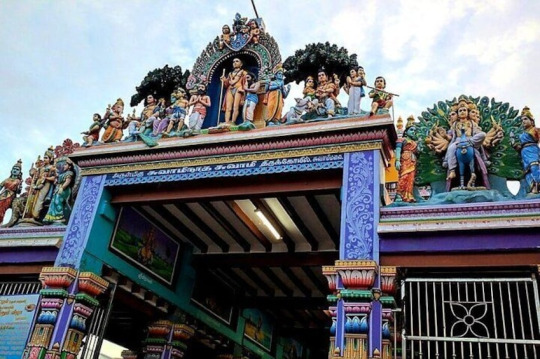
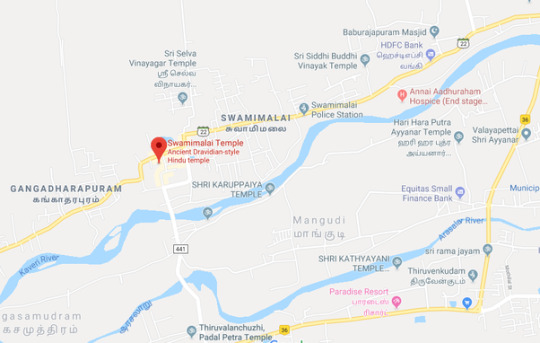
As outras 5 moradas são : Tiruttanikai, Tiruvavinankudi (Palani), PazhamudirSolai, Tirupparamkunram and Tiruchendur.
“Thirumurugatruppadai” é uma literatura Tâmil famosa e antiga escrita pelo poeta Nakkirar do período Sangam (por volta do século III AD), que contém as histórias da maravilhosa peça divina do Senhor Murugan em todas estas 6 moradas principais.
Estes seis locais, em conjunto, passaram a ser conhecidos como "Arupadai Veedu" (Língua Tâmil), significa os seis campos de batalha do Senhor.
Adoração em Tamil Nadu
Thai Poosam durante Janeiro-Fevereiro é um festival celebrado durante 6 dias. No dia de Thai Poosam, Kavadis e Palkudams são levados pelos devotos em procissão à volta de Chhedanagar. Abhishekams especiais são realizados to the Moolavar and Utsavar (moorthi da divindade geralmente levada durante as procissões do festival do templo; utsavar moorthi geralmente é feito de metal, e Moolavar murthi geralmente é feito de pedra). Annadhanam (A Oferta Sagrada de Alimento) é fornecida a todos os devotos que participam das funções. À noite, o Senhor Muruga é levado em procissão acompanhado por Nadaswaram (instrumento musical), Veda Parayanam, à volta de Chhedanagar.
Dia de Vaikasi Visakam, durante Maio-Junho, Kavadis (Kavadi é uma 'carga física' feita de uma estrutura elaborada e decorada, colocada nos ombros de uma pessoae) e Palkudams (jarros de leite) são levados pelos devotos em procissão à volta de Chhedanagar.
Skanda Sashti durante Outubro-Novembro é um festival celebrado durante 6 dias. São organizados discursos espirituais por eruditos e/ou concertos musicais de artistas populares do Sul ou de Mumbai.

#Bhagavan Sri Ramana Maharshi#Kartikeya Karttikeya Skanda Kumara Murugan Mahasena Shanmukha Subrahmanya#Pranava OM#Arupadai Veedu#mahavakya#Tu És Aquilo
8 notes
·
View notes
Photo

Moolavar Sri Oppiliappan (Garba griham) Kumbakonam, tamil Nadu
13 notes
·
View notes